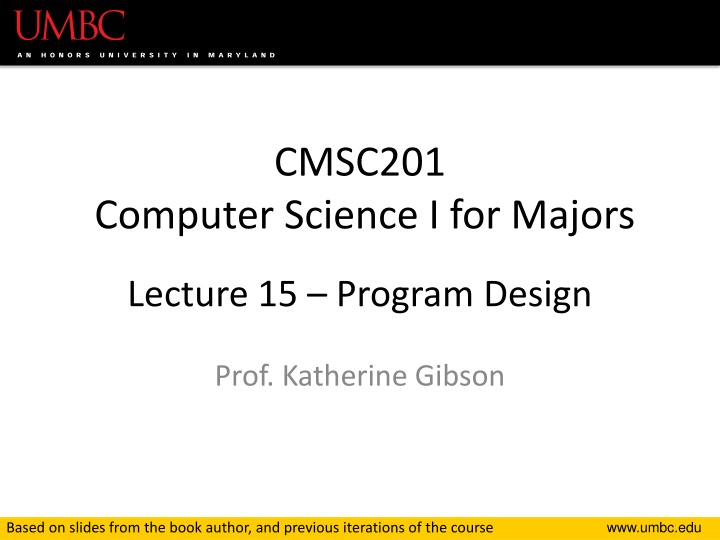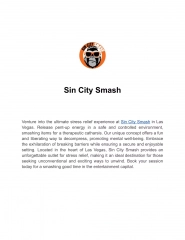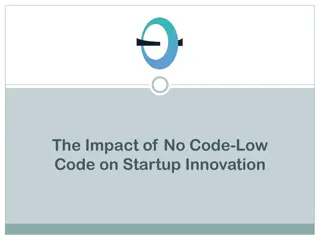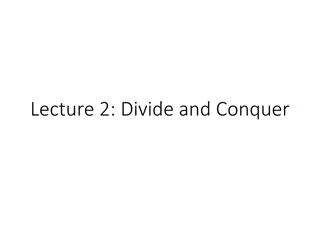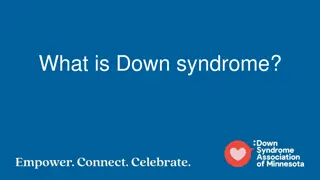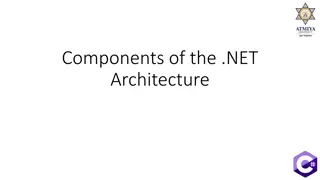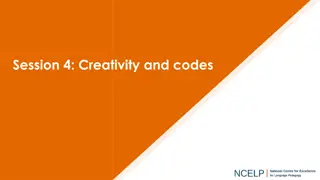Program Design Essentials: Breaking Down Code
In this lecture, we delve into the details of writing good code and designing programs effectively. We emphasize the importance of readability and modularity in code, discussing methods to enhance these aspects. Examples and discussions on improving code readability, variable naming, function decomposition, and consistent conventions are provided. The ultimate goal is to make code more understandable, maintainable, and adaptable for both current and future developers.
Download Presentation

Please find below an Image/Link to download the presentation.
The content on the website is provided AS IS for your information and personal use only. It may not be sold, licensed, or shared on other websites without obtaining consent from the author.If you encounter any issues during the download, it is possible that the publisher has removed the file from their server.
You are allowed to download the files provided on this website for personal or commercial use, subject to the condition that they are used lawfully. All files are the property of their respective owners.
The content on the website is provided AS IS for your information and personal use only. It may not be sold, licensed, or shared on other websites without obtaining consent from the author.
E N D
Presentation Transcript
CMSC201 Computer Science I for Majors Lecture 15 Program Design Prof. Katherine Gibson www.umbc.edu Based on slides from the book author, and previous iterations of the course
Last Class We Covered Functions Returning values Returning multiple values at once Modifying parameters Mutable Immutable Modular programming 2 www.umbc.edu
Any Questions from Last Time? www.umbc.edu
Todays Objectives To discuss the details of good code To learn how to design a program How to break it down into smaller pieces Top Down Design To introduce two methods of implementation To learn more about Modular Development 4 www.umbc.edu
Good Code Readability www.umbc.edu
Motivation We ve talked a lot about certain good habits we d like you all to get in while writing code What are some of them? There are two main reasons for this Readability Adaptability 6 www.umbc.edu
Readability Having your code be readable is important, both for your sanity and someone else s Having highly readable code makes it easier to: Figure out what you re doing while writing the code Figure out what the code is doing when you come back to look at it a year later Have other people read and understand your code 7 www.umbc.edu
Improving Readability Improving readability of your code can be accomplished in a number of ways Comments Meaningful variable names Breaking code down into functions Following consistent naming conventions Language choice File organization 8 www.umbc.edu
Readability Example What does the following code snippet do? def nS(p, c): l = len(p) if (l >= 4): c += 1 print(p) if (l >= 9): return p, c # FUNCTION CONTINUES... There isn t much information to go on, is there? 9 www.umbc.edu
Readability Example What if I added meaningful variable names? def nS(p, c): l = len(p) if (l >= 4): c += 1 print(p) if (l >= 9): return p, c # FUNCTION CONTINUES... 10 www.umbc.edu
Readability Example What if I added meaningful variable names? def nextState(password, count): length = len(password) if (length >= 4): count += 1 print(password) if (length >= 9): return password, count # FUNCTION CONTINUES... 11 www.umbc.edu
Readability Example And replaced the magic numbers with constants? def nextState(password, count): length = len(password) if (length >= 4): count += 1 print(password) if (length >= 9): return password, count # FUNCTION CONTINUES... 12 www.umbc.edu
Readability Example And replaced the magic numbers with constants? def nextState(password, count): length = len(password) if (length >= MIN_LENGTH): count += 1 print(password) if (length >= MAX_LENGTH): return password, count # FUNCTION CONTINUES... 13 www.umbc.edu
Readability Example And added vertical space? def nextState(password, count): length = len(password) if (length >= MIN_LENGTH): count += 1 print(password) if (length >= MAX_LENGTH): return password, count # FUNCTION CONTINUES... 14 www.umbc.edu
Readability Example And added vertical space? def nextState(password, count): length = len(password) if (length >= MIN_LENGTH): count += 1 print(password) if (length >= MAX_LENGTH): return password, count # FUNCTION CONTINUES... 15 www.umbc.edu
Readability Example Maybe even some comments? def nextState(password, count): length = len(password) if (length >= MIN_LENGTH): count += 1 print(password) if (length >= MAX_LENGTH): return password, count # FUNCTION CONTINUES... 16 www.umbc.edu
Readability Example Maybe even some comments? def nextState(password, count): length = len(password) if (length >= MIN_LENGTH): count += 1 print(password) # if long enough, count as a password # if max length, don't do any more if (length >= MAX_LENGTH): return password, count # FUNCTION CONTINUES... 17 www.umbc.edu
Readability Example Now the purpose of the code is a bit clearer! (It s actually part of some code that generates a complete list of the possible passwords for a swipe-based login system on a smart phone) You can see how small, simple changes increase the readability of a piece of code 18 www.umbc.edu
Commenting is an Art Though it may sound pretentious, it s true There are NO hard and fast rules for when to a piece of code should be commented Only guidelines (This doesn t apply to required comments like file headers, though!) 19 www.umbc.edu
General Guidelines If you have a complex conditional, give a brief overview of what it accomplishes # check if car fits customer criteria if color == "black" and int(numDoors) > 2 \ and int(price) < 27000: If you did something you think was clever, comment that piece of code So that future you will understand it! 20 www.umbc.edu
General Guidelines Don t write obvious comments # iterate over the list for item in myList: Don t comment every line # initialize the loop variable choice = 1 # loop until user chooses 0 while choice != 0 21 www.umbc.edu
Good Code Adaptability www.umbc.edu
Adaptability Often, what a program is supposed to do evolves and changes as time goes on Well-written flexible programs can be easily altered to do something new Rigid, poorly written programs often take a lot of work to modify When coding, keep in mind that you might want to change or extend something later 23 www.umbc.edu
Adaptability: Example Remember how we talked about not using magic numbers in our code? Bad: Good: def makeGrid(): temp = [] for i in range(0, 10): temp.append([0] * 10) return temp def makeGrid(): temp = [] for i in range(0, GRID_SIZE): temp.append([0] * GRID_SIZE) return temp 24 www.umbc.edu
Adaptability: Example In the whole of this program we use GRID_SIZE a dozen times or more What if we suddenly want a bigger or smaller grid? Or a variable sized grid? If we ve left it as 10, it s very hard to change But GRID_SIZE is very easy to change Our program is more adaptable 25 www.umbc.edu
Solving Problems www.umbc.edu
Simple Algorithms Input What information we will be given, or will ask for Process The steps we will take to reach our specific goal Output The final product that we will produce 27 www.umbc.edu
More Complicated Algorithms We can apply the same principles to more complicated algorithms and programs There may be multiple sets of input/output, and we may perform more than one process 28 www.umbc.edu
Complex Problems If we only take a problem in one piece, it may seem too complicated to even begin to solve Creating your own word processor Making a video game from scratch A program that recommends classes based on availability, how often the class is offered, and the professor s rating 29 www.umbc.edu
Top Down Design www.umbc.edu
Top Down Design Computer programmers use a divide and conquer approach to problem solving: Break the problem into parts Solve each part individually Assemble into the larger solution These techniques are known as top down design and modular development 31 www.umbc.edu
Top Down Design Breaking the problem down into pieces makes it more manageable to solve Top-down design is a process in which a big problem is broken down into small sub- problems, which can themselves be broken down into even smaller sub-problems 32 www.umbc.edu
Top Down Design: Illustration First, start with a clear statement of the problem or concept Big Idea A single big idea 33 www.umbc.edu
Top Down Design: Illustration Next, break it down into several parts Big Idea Part 1 Part 2 Part 3 34 www.umbc.edu
Top Down Design: Illustration Next, break it down into several parts If any of those parts can be further broken down, then the process continues Big Idea Part 1 Part 2 Part 3 Part 2.A Part 2.B Part 2.C Part 3.A Part 3.B 35 www.umbc.edu
Top Down Design: Illustration And so on Big Idea Part 1 Part 2 Part 3 Part 2.A Part 2.B Part 2.C Part 3.A Part 3.B Part 2.B.1 Part 2.B.2 36 www.umbc.edu
Top Down Design: Illustration Your final design might look like this chart, which shows the overall structure of the smaller pieces that together make up the big idea of the program Big Idea Part 1 Part 2 Part 3 Part 2.A Part 2.B Part 2.C Part 3.A Part 3.B Part 2.B.1 Part 2.B.2 37 www.umbc.edu
Top Down Design: Illustration This is like an upside-down tree, where each of the nodes represents a process Big Idea Part 1 Part 2 Part 3 Part 2.A Part 2.B Part 2.C Part 3.A Part 3.B Part 2.B.1 Part 2.B.2 38 www.umbc.edu
Top Down Design: Illustration The bottom nodes represent pieces that need to be developed and then recombined to create the overall solution to the original problem. Big Idea Part 1 Part 2 Part 3 Part 2.A Part 2.B Part 2.C Part 3.A Part 3.B Part 2.B.1 Part 2.B.2 39 www.umbc.edu
Analogy: Paper Outline Think of it as an outline for a paper you re writing for a class assignment You don t just start writing things down You come up with a plan of the important points you ll cover, and in what order This helps you to formulate your thoughts as well 40 www.umbc.edu
Implementing from a Top Down Design www.umbc.edu
Bottom Up Implementation Develop each of the modules separately Test that each one works as expected Then combine into their larger parts Continue until the program is complete Big Idea Part 1 Part 2 Part 3 Part 2.A Part 2.B Part 2.C Part 3.A Part 3.B Part 2.B.1 Part 2.B.2 42 www.umbc.edu
Bottom Up Implementation To test your functions, you will probably use main() as a (temporary) testing bed Calling functions with different test inputs Ensuring that functions play nicely together 43 www.umbc.edu
Top Down Implementation Create dummy functions that fulfill the requirements, but don t perform their job For example, a function that is supposed to take in a file name and return the weighted grades simply returns a 1 Write up a functional main() that calls these dummy functions Help pinpoint other functions you may need 44 www.umbc.edu
How To Implement? Top down? Or bottom up? It s up to you! As you do more programming, you will develop your own preference and style For now, just use something don t code up everything at once without testing anything! 45 www.umbc.edu
In-Class Example www.umbc.edu
In-Class Example (Expanding on the Used Car Lot from Lab 8) You run a Used Car Lot franchise, with multiple locations in the area Every morning you get a list of available cars from each location as a separate file Customers may come in and request any combination of features (color, price, etc.) You have to handle your stock for the day, and handle customers who ask for impossible things 47 www.umbc.edu
In-Class Example What is the big picture problem? What sort of tasks do you need to handle? What functions would you make? How would they interact? What does each function take in and return? What will your main() look like? 48 www.umbc.edu
In-Class Example Specifics: Keep track of what cars are available at each location, and which have already been sold Read in stock at beginning of program ( morning ) Write down stock at end of the program ( closing shop ) Don t accept requests for things like 8 door cars Customers don t need a preference for everything e.g., a 4 door under $35,000 but don t care what color Offer the option to buy from another location 49 www.umbc.edu
Modular Development www.umbc.edu
